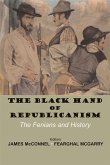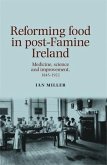By the late nineteenth century, world's fairs became important sites that showcased the industrial and commercial prowess of Western nations while simultaneously controlling the cultural representations of non-industrial societies through stereotypical and idealized renderings of those communities to its visitors. Who controlled the portrayal of the Irish and their heritage at these events? This volume explores various groups that exerted dominance regarding the display of Irish history and culture along myriad fairgrounds since the 1880s and the effects these actions had on how the global community perceived Ireland. Beware of Imitations argues that world's fairs and other exhibitions in Europe and the United States emerged as marketplaces that meditated Irishness in what this work terms a 'manufactured reality'. The groups that exercised power over various Irish displays included female British philanthropists, an entity of the British Parliament called the Department of Agriculture and Technical Instruction for Ireland, the American Irish and, eventually, the Irish themselves. All of these groups contributed in different ways to the creation, commodification and evolution of Irishness within the Atlantic world. The most common way that these groups portrayed a 'real' Ireland at these events occurred in the form of faux Irish villages that contained historic reproductions of well-known sites, such as Blarney Castle, along with the importation of Irish sod, water and people to live and work in these synthetic village landscapes where they sold arts and crafts. By utilizing the themes of power, authenticity and commodification of heritage, this work shows that many constituencies vied to hold power regarding the display of Ireland at these Atlantic-based extravaganzas. Their actions collectively highlighted that the malleability of an Irish identity certainly was in the eye of the beholder.
Bitte wählen Sie Ihr Anliegen aus.
Rechnungen
Retourenschein anfordern
Bestellstatus
Storno








